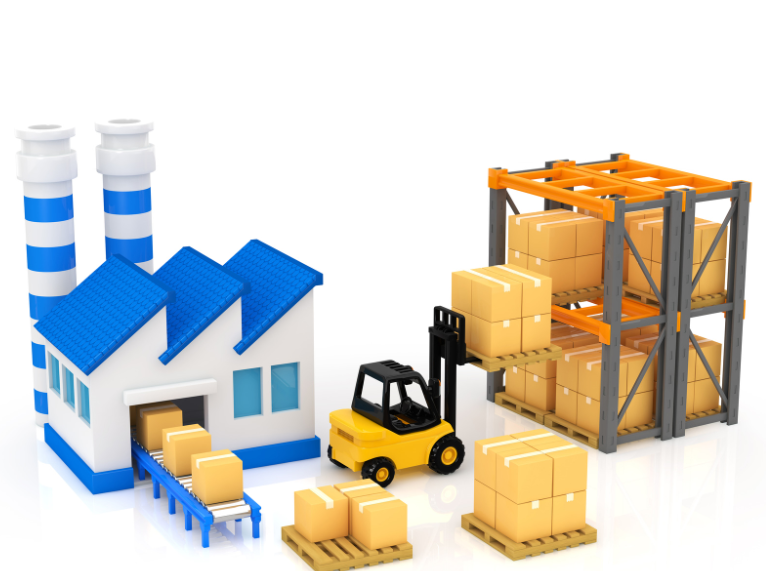Manufacturers are always looking for ways to optimize their production lines and minimize downtime. One key metric that they rely on for this is Overall Equipment Effectiveness (OEE). OEE measures the performance of manufacturing equipment, and it is a valuable tool for identifying areas where improvements can be made. In this article, we will explore what OEE is, why it matters, and how to improve OEE.
Understanding OEE
Before we dive into the best practices for how to improve OEE, it’s important to understand what OEE productivity is and how it’s calculated.
What is OEE?
OEE stands for Overall Equipment Effectiveness, and it is a measure of how well your manufacturing equipment is performing. It takes into account three key factors
Availability, Performance, and Quality.
- Availability: This measures the amount of time that your equipment is available and ready for production. It takes into account factors like planned downtime, unscheduled downtime, and changeover times.
- Performance: This measures how well your equipment is performing while it is running. It takes into account factors like cycle times, speed losses, and minor stops.
- Quality: This measures the quality of your output. It takes into account factors like defects, rework, and scrap.
How is OEE calculated?
we will show you the formula to calculate OEE
SIMPLE OEE CALCULATION
We may calculate simply oEE as the ratio of Fully Productive Time to Planned Production Time. Fully Productive Time simply means producing just Good Parts as quickly as feasible (Ideal Cycle Time) with no Stop Time. The simple calculation of OEE is:
OEE = (Good Count × Ideal Cycle Time) / Planned Production Time
Although this is an entirely valid calculation of OEE, it does not provide information about the three loss-related factors: Availability, Performance, and Quality. For that – we use the preferred calculation.
Preferred calculation.
To calculate OEE, you multiply these three factors together.
OEE = Availability x Performance x Quality
where:
- Availability = Operating Time / Planned Production Time
- Performance = Actual Production / Operating Time
- Quality = Good Units / Total Units Produced
Why is OEE important?
OEE is an important metric for manufacturers because it provides a comprehensive view of how efficiently their equipment is running. By measuring OEE, manufacturers can identify areas where improvements can be made and take action to increase productivity and profitability.
Factors that Affect OEE

The most often used OEE computation is based on the three OEE Factors: Availability, Performance, and Quality. The three OEE factors, Availability, Performance, and Quality, are multiplied to determine OEE.
How to improve OEE: Availability OEE Factor
Availability is the amount of time that equipment is available for production compared to the planned production time. Equipment downtime due to maintenance, breakdowns, and changeovers can all reduce availability.
How to Enhance OEE: Performance OEE Factor
Performance measures how efficiently equipment is running compared to its theoretical maximum output. Factors that can affect performance include speed losses, minor stops, and equipment idling.
Quality OEE Factor
Quality measures the percentage of good units produced compared to the total units produced. Poor quality can result in rework, scrap, and customer complaints.
How To Enhance OEE: OEE CALCULATION EXAMPLE
Now, let’s go over a full example utilizing the chosen OEE computation. The following is the data for the first shift:
Item Data
Shift Length 8 hours (480 minutes)
Breaks (2) 15 minutes and (1) 30 minutes
Downtime 47 minutes
Ideal Cycle Time 1.0 seconds
Total Count 19,271 widgets
Reject Count 423 widgets
Planned Production Time
The OEE computation begins with Planned Production Time, as explained on the OEE Factors page. So, initially, eliminate any Shift Time where no production is planned (usually Breaks).
Formula: Shift Length − Breaks
Example: 480 minutes − 60 minutes = 420 minutes
Run Time
The next stage is to determine how long production was truly going (not paused). Keep in mind that Stop Time should cover both unplanned (e.g., breakdowns) and scheduled (e.g., changeovers). Both provide prospects for advancement.
Formula: Planned Production Time − Stop Time
Example: 420 minutes − 47 minutes = 373 minutes
Good Count
If you do not directly track Good Count, it also needs to be calculated.
Formula: Total Count − Reject Count
Example: 19,271 widgets − 423 widgets = 18,848 widgets
Example to Calculate Availability OEE Factor
Availability is the first of the three OEE factors to be calculated. It accounts for when the process is not running (both Unplanned Stops and Planned Stops).
Formula: Run Time / Planned Production Time
Example: 373 minutes / 420 minutes = 0.8881 (88.81%)
Example to Calculate Performance OEE Factor
Performance is the second of the three OEE factors to be calculated. It accounts for when the process is running slower than its theoretical top speed (both Small Stops and Slow Cycles).
Formula: (Ideal Cycle Time × Total Count) / Run Time
Example: (1.0 seconds × 19,271 widgets) / (373 minutes × 60 seconds) = 0.8611 (86.11%
We can also calculate performance based on Ideal Run Rate. The equivalent Ideal Run Rate in our example is 60 parts per minute.
Formula: (Total Count / Run Time) / Ideal Run Rate
Example: (19,271 widgets / 373 minutes) / 60 parts per minute = 0.8611 (86.11%)
Example to Calculate Quality OEE Factor
Quality is the third of the three OEE factors to be calculated. It accounts for manufactured parts that do not meet quality standards.
Formula: Good Count / Total Count
Example: 18,848 widgets / 19,271 widgets = 0.9780 (97.80%)
Example to Calculate OEE
Improving your problem-solving can help you to deal with all those numbers in an easy way. OEE is calculated by multiplying the three OEE factors.
Formula: Availability × Performance × Quality
Example: 0.8881 × 0.8611 × 0.9780 = 0.7479 (74.79%)
OEE can also be calculated using a simple calculation.
Formula: (Good Count × Ideal Cycle Time) / Planned Production Time
Example: (18,848 widgets × 1.0 seconds) / (420 minutes × 60 seconds) = 0.7479 (74.79%)
The result is the same in both cases. The OEE for this shift is 74.79%.
Improve the three-factor of OEE
Tips to improve the three main factors of OEE from our comprehensive guide to how to improve OEE
How to improve the Availability OEE factor
Improving availability is all about reducing downtime and ensuring that your equipment is always available and ready for production. Here are some best practices for improving availability:
- Conduct Regular Maintenance: Regular maintenance is essential for keeping your equipment in good working condition. Make sure that you have a preventative maintenance schedule in place and that you follow it religiously.
- Use Predictive Maintenance: Predictive maintenance uses data and analytics to predict when maintenance is required. This can help you identify potential problems before they become critical and reduce downtime.
- Implement a Spare Parts Program: Make sure that you have a stock of critical spare parts on hand. This can help you quickly repair equipment when it breaks down, reducing downtime.
How to improve the performance OEE factor
Improving performance is all about making sure that your equipment is running as efficiently as possible. Here are some best practices for improving performance:
- Reduce Changeover Times: Changeover times can be a major source of lost production time. Identify ways to reduce changeover times, such as using standardized tooling and implementing single-minute exchange of dies (SMED) techniques.
- Use Real-Time Data: Real-time data can help you identify bottlenecks and other issues that are affecting performance. Use sensors and other tools to collect data in real-time and use it to make informed decisions.
- Implement Autonomous Maintenance: Autonomous maintenance involves empowering operators to perform routine maintenance tasks on their equipment. This can help improve equipment performance and reduce downtime.
How to improve the quality OEE factor
Improving quality is all about reducing defects and ensuring that your output meets the required standards. Here are some best practices for improving quality:
- Implement a Quality Control Program: Implementing methods and procedures to verify that your product meets the needed standards is part of a quality control program. Ascertain that you have a strong quality control program in place.
- Conduct Regular Inspections: Regular inspections can assist you in detecting quality concerns early on and preventing them from becoming big issues. Make sure to examine your equipment and output regularly.
- Implement Statistical Process Control (SPC): SPC entails utilizing statistical techniques to monitor and discover trends and patterns in your production process. This can assist you in identifying quality concerns and correcting them before they become serious difficulties.
How To Improve OEE: 7 Best Practices to Improve OEE and Productivity

Our best practices to improve OEE and productivity for your full plan to how to improve OEE.
1. Improve OEE by assigning a digital champion
A corporation may struggle to successfully deploy OEE at times. Let us begin here since effective implementation is essential before we can begin to enhance OEE.
There are several reasons why a corporation may have difficulties in implementing OEE. Perhaps they made an error in calculating OEE, giving the impression that the figure is incorrect. Perhaps there is strong resistance to changing from one work cell to another. Whatever the cause, we’ve discovered one best practice that might help: designate a digital (or project) champion.
We propose choosing a champion for your OEE implementation who is widely liked by shop floor operators, enjoys collecting and analyzing data, and has improved communication skills.
2. Automate data collection and reporting
We should automate the collection and reporting of production data as the next best practice for increasing OEE. We have obtained an intimate grasp of the difficulty and shortcomings of manually gathering data from years of working with customers in the field. Our experience has shown us that poor data gathering is a major impediment to increasing productivity and improving OEE.
Fortunately, the rapid adoption of IIoT has reduced the cost of the technology. As a result, producers should not accept manual data collecting or maintain the mountains of paperwork or Excel files that this antiquated approach necessitates.
There is a better solution that will help with OEE efforts: automate data collecting and reporting on your shop floor.
3. Visualize and display real-time OEE on the shop floor
Visualization significantly increases our understanding of difficult facts. We digest information faster in visual form, and linkages are easier to recognize. As a result, both operators and team leaders are more engaged.
Evidence from the United States has shown that engaged employees lead to gains in
- productivity (+17%),
- sales (+20%),
- and profitability (+21%).
Further, job satisfaction in factories also improves, leading to
- fewer defects (-40%),
- lower absenteeism (-41%),
- and fewer safety accidents (-70%).
Real-time visibility on the shop floor is required to reap the full benefits of visualizing production data. You may do this by using OEE displays, which present the data that is most relevant to the shop floor.
4. Make sure all production stops are commented
Once you’ve implemented automated OEE software, another best practice that can help you improve OEE is to make sure that all production stops are documented. Simply asking supervisors to check at the end of each shift is a simple way to ensure that all stops receive comments. Alternatively, if Evocon is used, operators can easily see if they forgot to comment on any of the stops.
As manufacturers, you understand how much production downtime may cost your company. Indeed, making downtime visible is a primary motivation for many businesses to implement OEE in the first place.
However, knowing when production is halted is only half the battle. To begin improving OEE, you must first understand why the stop happened. This is where mandating comments at every stop comes in handy: it gives you the “why.” And once you’ve determined the “why,” your shop floor may use the 5 Whys to find solutions.
To properly capitalize on the use of comments on production stoppage, you should invest some time in developing a system for categorizing machine downtime reasons.
5. Implement cross-functional daily review and discussion sessions
The goal of this best practice is to promote communication and involvement among all departments involved in the manufacturing process.
So, if you have a quality assurance department and a maintenance team, invite a representative from each to the daily sessions. The more brains involved in problem-solving, the faster the rate of improvement and the higher it may achieve the quality of solutions that.
6. Start eliminating the Six Big Losses to improve OEE
The Six Big Losses serve as the foundation for calculating OEE. You may acquire an idea of where to focus your development efforts by analyzing the sources and relative quantities of your plant’s six major losses.
It should prioritize unplanned downtime as the first major loss. Difficulties ranging from equipment breakdown, which can be tracked using technical availability, to poor internal logistics, can cause unplanned downtime such as missing material or an operator. Because a broken machine can halt the entire manufacturing process, this should be the first priority.
7. Utilize Root Cause Analysis
Once OEE has revealed your six major losses, it is time to begin problem-solving. We advocate using Root Cause Analysis (RCA) for this endeavor.
RCA is a methodical problem-solving method that assists us in determining the root cause of an issue. The notion is that by addressing the underlying cause rather than the symptoms, you may avoid issues from repeating.
RCA consists of six steps:
- Define the event.
- Determine the causes.
- Find the root cause.
- Find solutions.
- Take action.
- Verify solution effectiveness.
Three Methodologies for Improving OEE in Manufacturing
The three most popular manufacturing improvement methodologies are Lean Manufacturing, Six Sigma, and the Theory of Constraints.
Lean Methodology
The Lean methodology is all about eliminating waste in the manufacturing process. This can include anything from reducing unnecessary movement of workers to eliminating excess inventory. By streamlining the production process and focusing on value-added activities, manufacturers can increase OEE.
Visual management tools are one method to put Lean ideas into practice. A Kanban board, for example, can aid in visualizing material movement and highlighting possible waste spots. This can also aid in the identification of bottlenecks in the manufacturing process, allowing for faster issue resolution.
Six Sigma Methodology
Six Sigma is a data-driven approach that aims to reduce defects and variation in the OEE manufacturing process. By using statistical analysis, manufacturers can identify areas of inefficiency and work to improve them.
Process maps are one method for putting Six Sigma ideas into practice. This can aid in visualizing the whole manufacturing process and identifying areas of possible variance. Manufacturers may improve OEE by standardizing procedures and decreasing variance.
Theory of Constraints
The Theory of Constraints is a methodology that aims to identify and eliminate constraints in the OEE manufacturing process. By identifying the bottleneck or constraint, manufacturers can work to improve the overall flow of production.
A value stream map is one method for putting the Theory of Constraints ideas into action. This can aid in visualizing the complete manufacturing process and identifying the restriction. Manufacturers can enhance OEE by trying to reduce the limitation.
Conclusion
In conclusion for our guide to how to improve OEE. Overall Equipment Effectiveness (OEE) is a critical metric for measuring the efficiency of OEE manufacturing equipment. By focusing on factors that affect OEE, such as availability, performance, and quality, manufacturers can identify areas for improvement and take action to increase productivity and profitability. By implementing strategies such as preventive maintenance, autonomous maintenance, lean manufacturing principles, real-time data monitoring, and continuous improvement projects, manufacturers can improve their OEE and stay competitive in the global marketplace.
FAQs
A good OEE score depends on the industry and the type of equipment being used. Generally, an OEE score of 85% or higher is considered to be excellent.
Common causes of low OEE include equipment breakdowns, maintenance issues, poor quality, and inefficient production processes.
Real-time data monitoring allows manufacturers to quickly identify and respond to issues that could reduce OEE, such as equipment breakdowns and quality issues.
The timeline for seeing improvements in OEE depends on the specific strategies being implemented and the current state of the production line. However, manufacturers can generally expect to see improvements in OEE within a few weeks or months of implementing improvement strategies.
Employees play a critical role in improving OEE by operating equipment effectively, identifying and reporting issues, and participating in training and continuous improvement projects.
The methodology is known as IDA (Information, Decision, Action).

